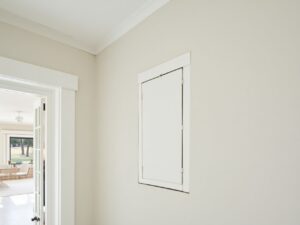A home renovation is an exciting opportunity to improve both the form and function of your living space. But excitement alone won’t carry a project across the finish line. From kitchen upgrades to full structural changes, renovations can quickly spiral out of control without deliberate forethought. Whether the goal is increased comfort, improved resale value, or addressing long-overdue repairs, proper planning is the foundation of a successful outcome. Homeowners who invest time into preparation are far more likely to avoid delays, overspending, and regrettable design choices.
Defining Your Renovation Goals
Starting with a clear sense of purpose can make or break the success of your project. Jumping into a renovation with vague ideas like “I want it to look better” or “We need more space” sets the stage for frustration and wasted effort. Instead, take time to define exactly what you want to accomplish. Are you preparing the home for resale within a year, or customizing it to meet your family’s long-term needs? Are you focusing on aesthetics, functionality, or energy efficiency?
Setting specific goals allows you to make informed decisions about design, layout, and materials. If you plan to age in place, features like walk-in showers or wider doorways may be more important than trendy design elements. If resale is top of mind, you’ll likely prioritize updates that have broad market appeal. Knowing your “why” will act as a compass for the entire project, helping you assess whether choices serve the bigger picture.
Budgeting Beyond the Basics
Renovation budgets are rarely one-size-fits-all, and they must be approached with a healthy dose of realism. Many homeowners budget for materials but forget to account for labor, permits, tool rentals, or cleanup costs. This oversight contributes to the common issue of going over budget, something reported by 31% of homeowners in a 2024 Houzz survey.
Building a comprehensive budget means pricing out not only what’s visible—like cabinetry or tile—but also what’s behind the walls, such as electrical rewiring or HVAC upgrades. You’ll also want to factor in project-specific needs like demolition, disposal, or structural engineering consultation. Always include a contingency fund of 15 to 20 percent for unexpected expenses like hidden water damage or outdated wiring. Budgeting isn’t about pinching pennies—it’s about avoiding surprises and staying in control from start to finish.
Hiring the Right Professionals
A renovation team can be the greatest asset—or the biggest liability. While DIY shows make it seem easy to handle everything yourself, most renovations require professional skill sets that go beyond basic handiwork. A reputable general contractor, licensed electricians and plumbers, and design professionals can ensure the work is done safely, legally, and efficiently.
Roofing, in particular, is one area where experience matters. Working with roofing experts ensures your investment protects your home and meets current safety codes. The second sentence in your agreement with any contractor should define the full scope of work, timelines, and payment terms in detail. Do your research, check references, and never skip the written contract phase. Professionals should enhance their project’s efficiency, not derail it with inexperience or poor communication.
Navigating Permits and Legal Requirements
Ignoring building codes is a recipe for long-term headaches. Many homeowners assume that minor renovations don’t need permits, but that’s a dangerous assumption. Most municipalities require permits for electrical updates, structural changes, new plumbing, and exterior modifications.
Start by contacting your local building department to learn what your city or county mandates. Getting permits not only ensures your renovation meets safety standards, but it also protects you during future resale. A buyer or inspector may flag unpermitted work, forcing you to pay for corrections or legal compliance years later. Budget time and money for this administrative step, and consult professionals who are familiar with local regulations.
Creating a Realistic Timeline
Renovation timelines can easily become moving targets. The more complex the project, the greater the opportunity for delays. Custom orders, backlogged materials, or crew availability can all shift your schedule. A bathroom remodel might take three weeks on paper, but unforeseen plumbing issues could stretch it to six.
To stay on track, build a project calendar with milestones: demolition, framing, inspections, rough-ins, and finishes. Discuss this timeline in detail with your contractor and request regular updates. If you’re living in the home during the work, account for time buffers between major disruptions. Timelines should guide—not rush—the renovation, but having a well-organized schedule helps keep all parties accountable and reduces miscommunication.
Planning for Disruption
Even the smoothest renovation disrupts daily life. Dust, noise, and limited access to parts of your home are inevitable. Projects that touch utilities—such as kitchen or bathroom upgrades—can leave you without power or running water temporarily. These are not minor inconveniences, especially for families with children, seniors, or pets.
Designate “safe zones” where daily life can continue. If possible, create a makeshift kitchen or bathing area to reduce the impact of a long-term bathroom renovation. For more extensive work, consider staying with family or renting temporary accommodations. Planning for disruption isn’t pessimism—it’s practicality. It helps maintain household harmony and reduces friction throughout the project.
Selecting Materials and Finishes Thoughtfully

Material selection is where vision meets practicality. A marble countertop may look stunning in a showroom, but its high maintenance requirements might make it a poor choice for a busy family kitchen. Similarly, hardwood floors bring warmth and value, but may not be ideal for homes with large pets or high humidity.
Visit showrooms, handle materials in person, and ask questions about upkeep and durability. Take lighting and climate into account as well—some finishes may appear differently depending on exposure. Make your selections early in the process to prevent delays, and always confirm availability and lead times. Matching beauty with performance ensures you’ll enjoy your renovation long after the work is complete.
Evaluating Long-Term ROI
Not every renovation delivers equal returns, especially when resale is a priority. Upgrades like minor kitchen remodels, siding replacement, and attic insulation historically offer some of the highest returns, with ROI ranging from 65 to 90 percent depending on region and execution.
That said, ROI isn’t just financial. Improvements that enhance quality of life—such as creating an open floor plan, improving natural light, or increasing energy efficiency—offer emotional and functional dividends. Weigh both market value and personal satisfaction when making decisions. Use remodeling calculators or consult a local realtor for insight into how specific upgrades affect property value in your area.
Thorough planning is the cornerstone of any successful home renovation. Defining your goals, establishing a realistic budget, choosing qualified professionals, and preparing for inevitable challenges will lead to better results with fewer regrets. Each decision, from permit applications to countertop selections, plays a role in shaping the outcome. With strategy and patience, your home transformation will feel less like a gamble and more like a well-executed investment in your future.






